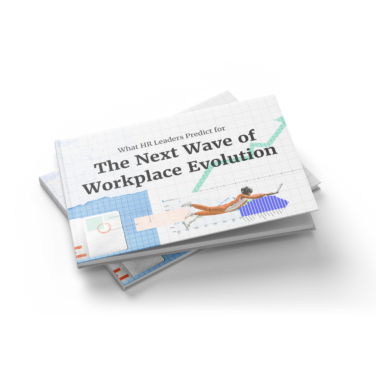It seems that barely a day goes by without someone trying to sell me their latest and greatest software product.
With a galaxy of HR software tools that promise the universe, how can you cut through the noise and build an HR tech stack that works best for your organization?
Drawing on my years of experience implementing HR software, I’ll share my knowledge and best practices to help you do so.
What Is An HR Tech Stack?
An HR tech stack is a suite of integrated software tools and platforms that support various HR functions. This encompasses technologies that assist with recruitment, onboarding, employee management, performance management, benefits administration, learning and development, payroll, and employee engagement.
The Case For An HR Tech Stack
Despite what the salesperson from the vendor might tell you, no system is great at everything.
For example, an “all-in-one" human resources information system (HRIS) might have an applicant tracking system bolted on as an afterthought.
Building your HR tech stack is a case of mixing and matching tools that help support your HR functions and, ideally, easily integrate with each other.
Bottom line is that, while you could go for a “one tool to rule them all” approach, it’s usually the case that a mix is best. You can also save money that way too.
Benefits Of An HR Tech Stack
A well-designed HR tech stack helps streamline HR processes, improve efficiency, and enhance the employee experience.
- Streamlining HR processes: Automation within the tech stack reduces manual tasks. For instance, applicant tracking systems can automate job postings and resume screening, while payroll software calculates salaries and deductions without manual errors.
- Improving efficiency: With integrated platforms, information can flow easily across HR functions. For example, a human resource management system (HRMS) can sync employee data with payroll platforms, minimizing data entry and ensuring consistency.
- Enhancing employee experience: The stack can offer self-service tools for employees to manage their benefits, request time off, or track training progress. This autonomy can increase employee satisfaction and reduce HR workload.
HR Tech Stack: Common Components
While the mix will vary across organizations, there are some common types that most organizations will utilize to varying degrees.
Core HR Software
HRIS/HRMS
These tools are the backbone of your tech stack. They’re your source of truth for employee data such as contracts, attendance, benefits, payroll, and personal information and many offer self-service to make updating this information easier.
Many of these tools will have data reporting functions that make it easy to keep track of important HR metrics such as headcount and turnover.
For more, check out our pick of the best human resource management systems.
Payroll
While all HRMSs and some HRISs will have a payroll feature, that’s not always the case so you may need to buy separate payroll software.
While I recommend combining the two to help minimize data discrepancies, you can also make the case for separate systems if:
- You have a global team and the existing payroll feature in your HRMS may not cover that on a compliance level.
- You’re a small team and can’t justify forking out for an expensive HRMS product.
For more, check out our pick of the best payroll software.
Recruiting software
Recruiting software comes in a few different flavors so I’ll provide a brief overview of each.
Applicant tracking systems
There comes a time in most organizations’ lives when managing the recruitment process with spreadsheets just doesn’t cut it any longer.
Applicant tracking systems help you manage candidates' progress through your hiring process, report on key recruiting metrics, and even post jobs and source candidates.
For more, check out our pick of the best applicant tracking systems.
Candidate sourcing tools
Sourcing candidates can be one of the most time-intensive aspects of recruitment, hence the rise of specialist tools to help expedite the process.
Common features include candidate databases, direct integrations with job boards and social network sites, and advanced talent discovery tools.
Check out our pick of the best candidate sourcing tools.
Video interviewing software
With so many interviews being conducted online now, many organizations are utilizing video interviewing software to help conduct and assess video interviews.
Key features include one-way and two-way video interviews, collaboration tools, in-depth analysis, and customizable templates.
Check out our pick of the best video interview platforms.
Onboarding software
Many HRMSs have an onboarding workflow, but there are other ways of conducting onboarding outside of these including specialized onboarding software.
For example, software that helps with task management and checklists can also be used for onboarding, as can learning management systems.
Learning management systems
A learning management system (LMS) is a digital platform that helps develop, deliver, and track training programs or educational courses. Many organizations use them to facilitate employee development and track learner progress over time.
It’s often difficult to track the ROI from L&D programs and LMSs assist in this by capturing data that will help you to figure out your L&D metrics.
For more, check out our pick of the best learning management systems.
Performance management software
Performance management is tricky to get right. Performance management software helps to simplify the performance review process, set and track goals, analyze productivity, record achievements, and plan for the future.
Key features include 1:1 check-in templates, tools to solicit 360-degree feedback, and assessment tools.
For more, check out our pick of the best performance management software.
Employee Experience Software
Employee recognition platforms
While not the be-all and end-all, it’s no secret that employee recognition helps boost employee motivation and can aid in retention and recruitment.
There are ways to recognize employees beyond promotions and raises, and this is where employee recognition software can help.
Features include leaderboards, a public recognition wall, rewards, and automated recognition (think birthdays and work anniversaries).
For more, check out our pick of the best employee recognition software.
Employee survey tools
Gathering employee feedback is crucial for improving the employee experience and employee surveys are a great method of doing this.
Employee survey tools help with designing and disseminating surveys and analyzing the results.
Key features include survey builders, survey reports, and benchmarking data. For more, check out our list of the best employee survey tools.
HR Analytics Software
As HR grows in status as a strategic partner, using data to support strategies and implement change is increasingly important.
HR analytics software helps you mine for rich data related to your workforce and present it in a way that’s relevant to your audience and easy to digest.
Key features include predictive analytics, customizable dashboards, and real-time reporting.
For more, check out our pick of the best HR analytics software.
How To Build An HR Tech Stack
Over time, your HR tech stack will evolve to meet changing business needs. Here’s a process to decide whether or not a new tool is for you and make a business case.
1. Business needs and vision
The first step is to write out the vision for HR and ensure it aligns with the business strategy, direction, and vision.
The benefit of this is creating buy-in from the key stakeholders and decision-makers on your leadership team. List out your key needs and the reason why.
2. Identify pain points
Pain points in this context refer to the specific difficulties and inefficiencies a company experiences in its current HR management processes, which HR software aims to address and alleviate.
Common pain points to look out for include time spent on manual processes and data discrepancies.
3. Current process steps
Current process steps are the ways you're currently doing things in your HR department.
This should cover all your core HR tasks, such as how you handle employee records, leave requests, hiring, and onboarding.
Start by listing out the main processes, the steps for each process, who is responsible for each step, and the time each process takes you.
4. Define measures of success (ROI - return on investment)
This could be higher engagement, better retention rates, quicker turnaround on filling roles, or more bandwidth in the HR team for things like connection, training, and value-adding activities.
If you can save time by investing in HR software, what would you be doing with that time?
5. Get initial buy-in and approval
Present your findings from the above steps to find out if you have buy-in from your HR leaders to continue or if you need to shut the process down. If you have verbal approval, keep going!
6. Gather requirements
Before contacting software providers, be clear on your requirements and have input from all your key stakeholders, including people who are responsible for different parts of your HR functions, since they will all have different needs.
7. Contact vendors
Shop around, request a few demos, and share your requirements in advance with each software provider you meet with. Doing so will help them demonstrate how their software can improve your HR function according to your needs.
If the platform you’re interested in doesn’t have all the features you need, ask how easy it would be to integrate it with other applications.
8. Build the business case and get approval
Using the above data, it's time to write your business case.
This doesn't have to be a 10-page document, it can be as simple as a one-page memo.
For a deeper dive, check out our article how to make a business case for HR software.
9. Make a decision
Congrats! You have the approval to go ahead with your vendor of choice. Next up is implementation, onboarding, and training. Fun times!


